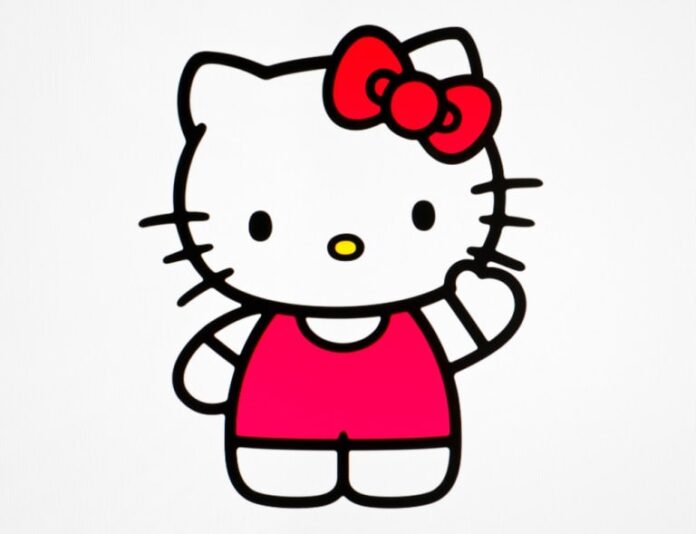Kawaii, a Japanese term that translates to “cute” in English, has become a defining feature of Japanese culture. This phenomenon extends beyond simple aesthetics to influence various aspects of daily life, from fashion and entertainment to food and personal behavior.
Kawaii pictures, characterized by their adorable, often childlike appeal, play a crucial role in propagating this cultural trend. This analysis delves into the charm behind kawaii pictures, exploring their origins, elements, and impact on both Japanese society and global culture.
Origins of Kawaii Culture
The roots of kawaii culture can be traced back to the 1970s in Japan. During this period, the country experienced a significant economic boom, which brought about increased consumerism and a desire for new, innovative products. The emergence of kawaii can be linked to several key developments:
Youth Rebellion: In the 1970s, Japanese teenagers began to rebel against the rigid and conservative norms of society. They adopted a new, playful handwriting style called “marui ji” or “round writing,” characterized by bubbly, rounded characters that looked cute and childlike. This trend quickly spread beyond handwriting to other forms of expression.
The Rise of Cute Characters: Sanrio, a Japanese company, introduced the character Hello Kitty in 1974. Hello Kitty’s design, featuring a simple, round face with minimal features, epitomized the kawaii aesthetic. The character’s immense popularity spurred the creation of countless other cute characters, solidifying kawaii as a mainstream cultural phenomenon.
Media Influence: The spread of manga and anime, both heavily featuring kawaii elements, further entrenched cute aesthetics in Japanese culture. Characters with large, expressive eyes, small mouths, and exaggerated emotions became iconic representations of kawaii.
Elements of Kawaii Pictures
Kawaii pictures are defined by several distinct elements that contribute to their overall charm and appeal:
- Simplified Features: Kawaii characters typically have simplified, rounded features. Large, expressive eyes are a common trait, often paired with small noses and mouths. This design creates a sense of innocence and vulnerability, making the characters appear endearing.
- Bright Colors: Kawaii pictures often use bright, pastel colors that evoke a sense of playfulness and happiness. These colors are visually appealing and contribute to the overall cheerful tone of the images.
- Exaggerated Expressions: Emotions in kawaii pictures are often exaggerated to convey clear, strong feelings. Whether it’s joy, surprise, or sadness, the expressions are designed to be easily recognizable and evoke empathy from the viewer.
- Cute Accessories: Kawaii characters are frequently adorned with cute accessories like bows, hats, or animal ears. These additions enhance the overall adorableness and distinctiveness of the characters.
- Childlike Proportions: Many kawaii characters are designed with childlike proportions, such as large heads and small bodies. This disproportionate anatomy further emphasizes their cuteness and non-threatening nature.
Impact on Japanese Society
Kawaii culture has a profound impact on various facets of Japanese society, influencing everything from consumer behavior to social interactions:
Consumer Goods: The demand for kawaii products is vast, encompassing toys, stationery, clothing, and even household items. Brands leverage kawaii aesthetics to appeal to consumers, often targeting younger demographics but also attracting adults who find comfort in the cute designs.
Fashion: Kawaii has given rise to distinct fashion styles, such as “Lolita” fashion, which features elaborate, Victorian-inspired dresses with a cute twist. This fashion trend highlights the blend of historical influences and modern kawaii aesthetics, creating a unique and eye-catching style.
Social Media and Communication: Kawaii culture has significantly influenced digital communication. Emojis, stickers, and GIFs featuring kawaii characters and expressions are widely used in messaging apps and social media platforms, making conversations more expressive and engaging.
Tourism: The global appeal of kawaii culture has made Japan a popular destination for tourists seeking to experience its cute aesthetic firsthand. Attractions like Sanrio Puroland and themed cafes offer immersive experiences that celebrate kawaii culture.
Global Influence of Kawaii Culture
While kawaii is deeply rooted in Japanese culture, its influence has spread worldwide, impacting various global trends like Pop culture, merchandising, Social Meda trends, & Cultural Exhcnage. Kawaii aesthetics have been adopted by international artists and designers, appearing in everything from music videos to fashion shows.
The global popularity of anime and manga has also introduced kawaii elements to a broader audience. The success of kawaii characters like Hello Kitty and Pokémon has led to widespread merchandising opportunities. These characters are now recognized and beloved worldwide, with products available in virtually every country.
Platforms like Instagram and TikTok have amplified the reach of kawaii culture. Influencers and content creators often incorporate kawaii elements into their posts, further popularizing the aesthetic.
Kawaii culture has facilitated a form of cultural exchange, where people from different backgrounds come together to appreciate and celebrate the charm of cute aesthetics. This exchange has fostered a greater understanding and appreciation of Japanese culture globally.
Criticisms and Controversies
Despite its widespread appeal, kawaii culture is not without its criticisms and controversies. Some critics argue that kawaii culture reinforces stereotypes about femininity and infantilization, particularly in how it portrays women and young girls. The emphasis on cuteness and innocence can be seen as limiting and reductive.
The commercialization of kawaii culture has led to concerns about the exploitation of cute aesthetics for profit. This commercialization can sometimes overshadow the cultural and artistic value of kawaii. As kawaii culture spreads globally, there are debates about cultural appropriation and the potential dilution of its original meaning and significance.
Conclusion
Kawaii culture, emphasizing cuteness and charm, has become an integral part of Japanese society and a significant global influence. Kawaii pictures, with their simplified features, bright colors, and exaggerated expressions, encapsulate the essence of this cultural phenomenon.
While kawaii culture continues to evolve and spread, it also faces challenges and criticisms that must be addressed. Understanding the charm behind Kawaii pictures provides insight into a unique cultural trend that continues to captivate and inspire people worldwide.
